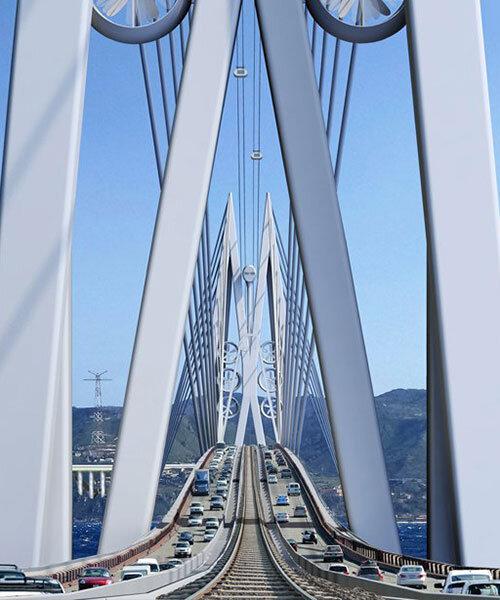Local communities in Sicily are mobilizing to oppose the Italian government’s controversial proposal to build what would become the world’s longest bridge, connecting the island to the mainland. The ambitious infrastructure project, intended to boost economic development and improve transportation links, has sparked widespread concern among residents and environmentalists over potential ecological damage, cultural disruption, and escalating costs. As debates intensify, the clash between national ambitions and local resistance highlights the complex challenges of balancing progress with preservation in one of Italy’s most historically rich regions.
Locals Rally Against Sicily Bridge Project Citing Environmental and Cultural Concerns
A growing coalition of residents, environmentalists, and cultural historians in Sicily has mobilized to oppose the ambitious bridge project intended to connect the island to mainland Italy. Critics argue that the construction threatens fragile marine ecosystems, including protected habitats for endangered species. Local fishermen have voiced concerns about altered fish migration patterns and potential damage to traditional fishing grounds, which could jeopardize their livelihoods for generations to come. Environmental groups stress that the region’s delicate biodiversity and natural beauty are at risk of irreversible harm.
Beyond ecological challenges, opponents highlight the potential loss of Sicily’s rich cultural heritage. The proposed route cuts through areas steeped in archaeological significance, putting ancient sites and longstanding local traditions in jeopardy. Community leaders have called for a comprehensive review process that weighs not only the economic benefits but also the intangible social and historical costs. Key points raised by locals include:
- Threat to marine biodiversity: Possible endangerment of species unique to the Strait of Messina.
- Disruption of fishing industry: Changes to marine life patterns could collapse local economies dependent on fishing.
- Risk to archaeological sites: Areas with historical artifacts may be destroyed or covered.
- Cultural identity concerns: Impact on community traditions tied to the land and sea.
| Aspect | Concerns | Impact |
|---|---|---|
| Environmental | Damage to marine wildlife habitats | Loss of biodiversity & fishing yield |
| Cultural | Destruction of archaeological sites | Loss of historical and cultural identity |
| Economic | Uncertain benefits for locals | Potential job loss in fishing sector |
Experts Warn of Economic and Structural Challenges Surrounding the Proposed Sea Crossing
Critics caution that the ambitious engineering feat of connecting Sicily to mainland Italy comes with a heavy price tag and complex logistical hurdles. Economists highlight concerns over the project’s escalating costs, which could exceed initial estimates by billions, potentially draining public resources that might be better invested in social programs or infrastructure upgrades elsewhere. Additionally, the structural integrity of such a lengthy sea crossing poses unprecedented technical challenges, including resistance to seismic activity common in the region and the impact of harsh maritime weather conditions.
Environmentalists and urban planners also warn of long-term consequences, emphasizing the need to consider more than just immediate economic benefits. Key issues raised include:
- Disruption to fragile marine ecosystems that sustain local fisheries and biodiversity.
- Risks of soil erosion and land instability caused by extensive construction activities on both shores.
- Potential delays and maintenance costs that could burden taxpayers for decades.
| Challenge | Estimated Impact | Projected Timeline |
|---|---|---|
| Funding Overruns | +€5 Billion | By 2030 |
| Seismic Resilience Engineering | High Complexity | Ongoing |
| Environmental Mitigations | Significant | Pre-Construction Phase |
Community Leaders Propose Alternative Infrastructure Improvements to Enhance Regional Connectivity
Local community leaders have voiced strong opposition to the proposed Sicily bridge, advocating instead for a series of alternative infrastructure projects aimed at enhancing regional connectivity while minimizing environmental and social impacts. These alternatives emphasize upgrading existing transport links and boosting sustainable mobility options. Among the key proposals are:
- Modernization of rail networks to improve speed and reliability between Sicily and the mainland.
- Expansion of ferry services to increase capacity and frequency, ensuring better maritime connectivity.
- Development of integrated road and tunnel systems to facilitate safer and more efficient transit.
Community advocates argue that such measures could deliver comparable economic benefits without the immense cost or potential ecological disruption associated with building what would be the world’s longest suspension bridge. They underscore the importance of scalable projects that preserve local heritage and prioritize public transport enhancement over large-scale construction, which they fear may not sufficiently address the region’s unique logistical challenges.
| Proposal | Expected Impact | Estimated Cost |
|---|---|---|
| Rail Network Modernization | Reduced travel times, increased capacity | €1.2 billion |
| Ferry Service Expansion | More frequent crossings, greater flexibility | €450 million |
| Road and Tunnel Development | Improved safety, traffic flow optimization | €800 million |
In Conclusion
As plans for the world’s longest bridge across Sicily continue to stir debate, local opposition underscores the complexities of balancing ambitious infrastructure projects with community interests and environmental concerns. The unfolding controversy highlights the broader challenges Italy faces in modernizing its transport networks while preserving regional identities and ecosystems. With negotiations and protests sure to shape the project’s future, all eyes remain on Sicily as stakeholders seek a path forward that addresses both connectivity and local voices.



